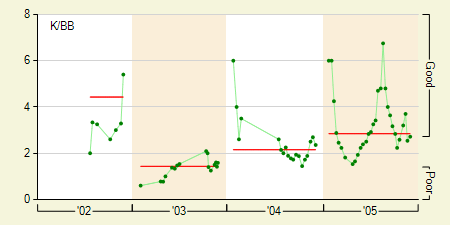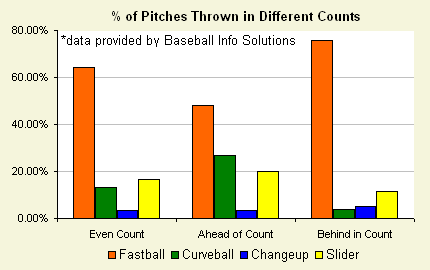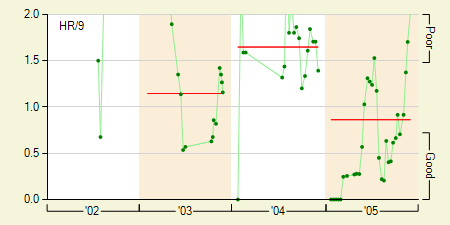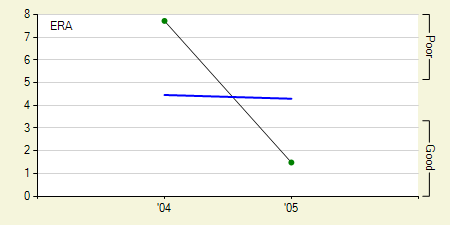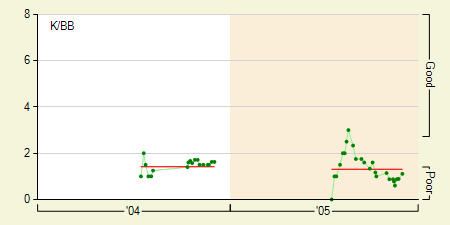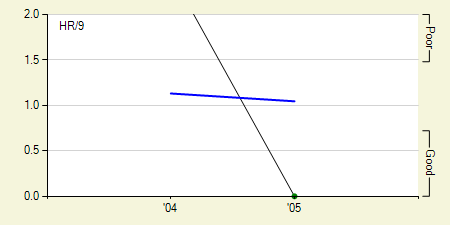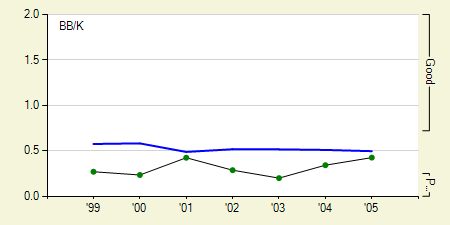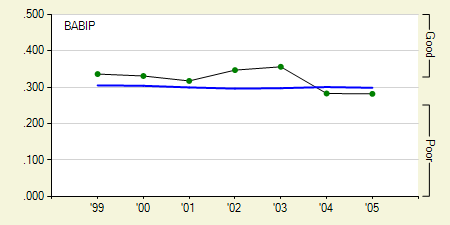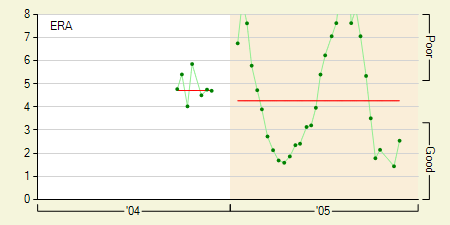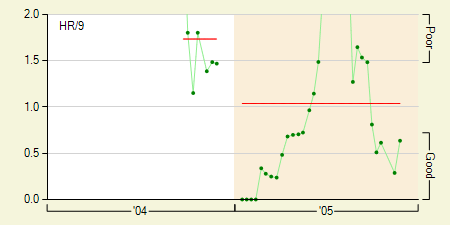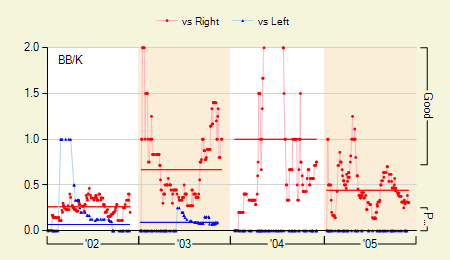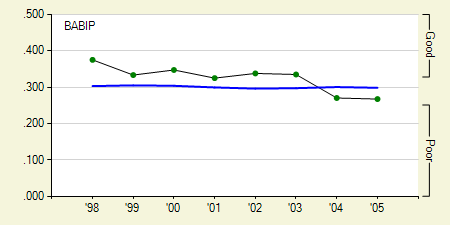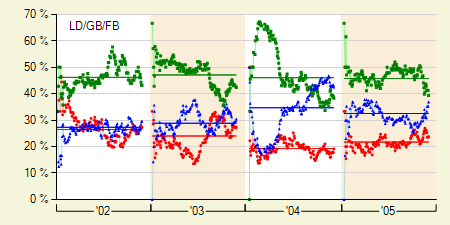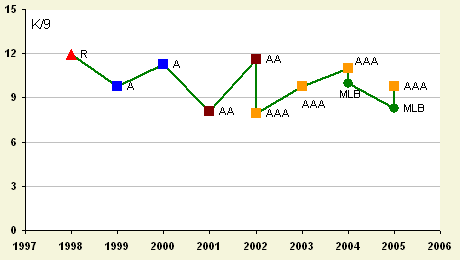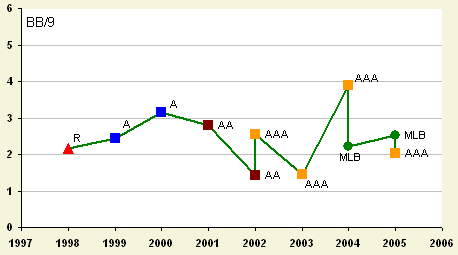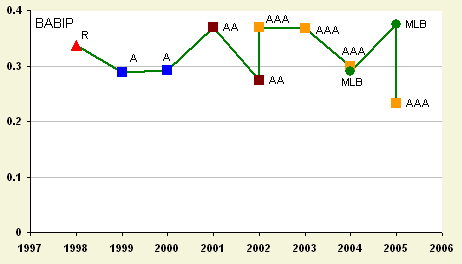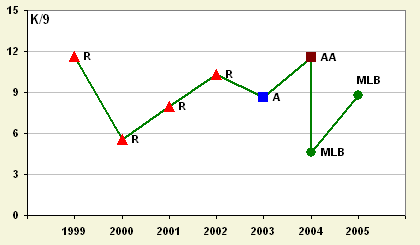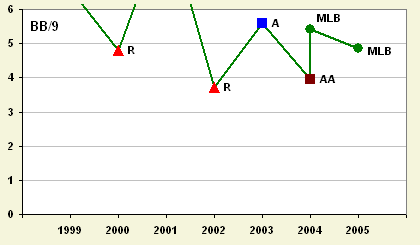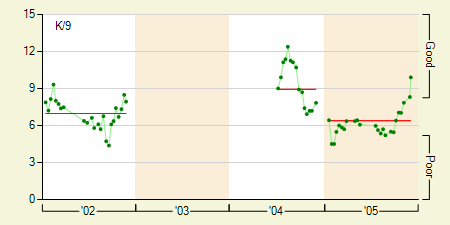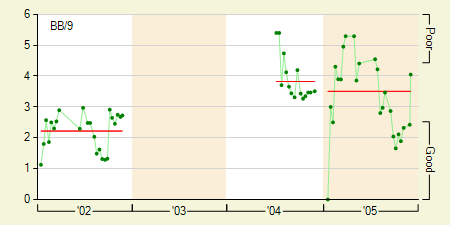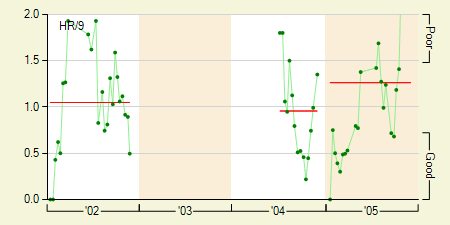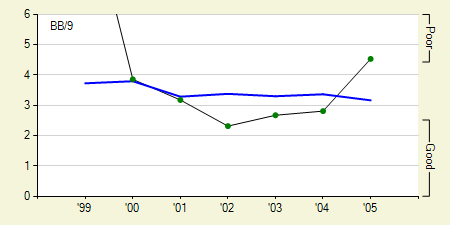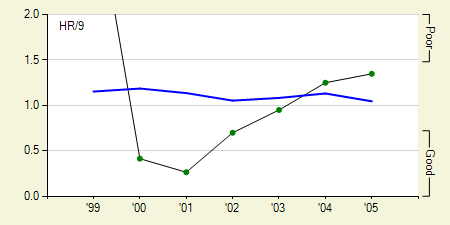The article I wrote about Juan Padilla being the luckiest pitcher in baseball got me thinking that maybe combining the three statistics of BABIP, HR/FB, and LOB% was not the best way to display a pitcher's overall “luck”. So instead of championing “Luck Factor” as a useful stat, I'm going to make a “luckless” ERA or luck independent ERA (iERA) which will have better practical applications. The formula is actually pretty simple:
iERA = ( ((.3627 * IP) – (.1287 * K) + (.1408 * FB) + (.3 * BB)) * 8.28) / IP
Basically this formula was the result of a bunch of relatively simple algebra on the three “luck” statistics HR/FB, BABIP and LOB%. Instead of solving each formula for each player, I plugged in the major league average for each, and proceeded to find out how many home runs, hits, unearned runs, and finally earned runs a player would have if everything was equal. This formula should normalize ERA for park, league, and in some sense, competition. In other words, it gives a pitcher's ERA as if all pitchers pitched under the same conditions.
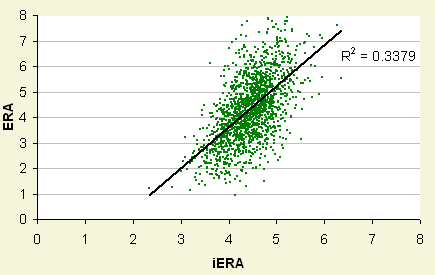
Let's take a look at how iERA compares to regular ERA. Naturally there is some correlation here, but the correlation isn't that great. I just did this to make sure they were actually measuring two different things, and they do. What iERA does have a high correlation with is a pitchers strikeout to walk ratio. Not much of surprise here as strikeouts and walks (and fly balls) are what sets pitchers apart in iERA.
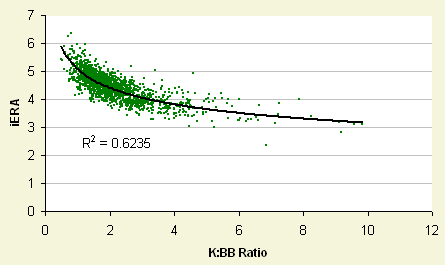
So you're probably asking, why should I care about a pitcher's iERA? It's actually quite good at telling you how lucky a pitcher was in any particular year. As you can see, once a player's ERA and iERA start to differ by more than 20%, there's about a 75% chance that his ERA and iERA will be closer the following year. Once you start to see a difference in ERA and iERA over 70%, it's pretty much a given that his ERA and iERA will be closer the next season.
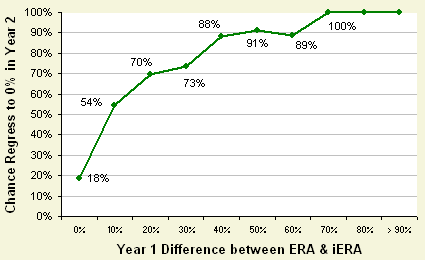
Furthermore, the amount that a player's ERA will revert to iERA is somewhat a function of how far it deviated in the first place. Player's don't tend to stray from a 0% difference in ERA and iERA much further than 20% on average.
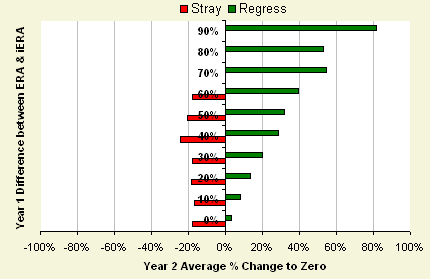
So just for kicks, let's take a look at some of the bigger discrepancies in iERA and ERA the past four years and see what they've done the following year. Here are 5 starters and 5 relievers that had a much lower ERA than they did iERA in 2004.
2004 2005
Name ERA iERA % Dif ERA iERA % Dif
Joe Nathan 1.62 3.80 -81% 2.70 3.65 -30%
Mike Gonzalez 1.25 2.83 -78% 2.70 4.15 -42%
Steve Kline 1.79 4.00 -77% 4.28 4.67 -9%
Luke Hudson 2.42 5.07 -71% 6.38 5.25 19%
Akinori Otsuka 1.75 3.62 -70% 3.59 4.19 -15%
2004 2005
Name ERA iERA % Dif ERA iERA % Dif
Jake Peavy 2.27 3.83 -51% 2.88 3.56 -21%
Al Leiter 3.21 5.07 -45% 6.13 5.41 12%
Bruce Chen 3.02 4.66 -43% 3.83 4.51 -16%
Carlos Zambrano 2.75 4.02 -38% 3.26 3.91 -18%
Tomo Ohka 3.40 4.81 -34% 4.04 4.63 -14%
Each of them did see an increase in their ERA and they all saw a drastic reduction in the percent difference between their ERA and iERA. Now let's take a look at the players that had a much higher ERA than iERA.
2004 2005
Name ERA iERA % Dif ERA iERA % Dif
Lance Cormier 8.14 5.12 46% 5.11 4.46 14%
Sergio Mitre 6.62 4.22 44% 5.37 4.17 25%
Mike Wood 5.94 4.37 30% 4.46 4.78 -7%
Brian Fuentes 5.64 4.32 26% 2.91 3.84 -28%
Neal Cotts 5.65 4.39 25% 1.94 4.25 -75%
2004 2005
Name ERA iERA % Dif ERA iERA % Dif
Casey Fossum 6.65 4.61 36% 4.92 4.50 9%
Derek Lowe 5.42 4.19 26% 3.61 3.69 -2%
Joaquin Benoit 5.68 4.42 25% 3.72 4.74 -24%
Brett Myers 5.52 4.48 21% 3.72 3.75 -1%
Scott Kazmir 5.67 4.62 20% 3.77 4.60 -20%
All of these pitchers saw a decrease in ERA, some more drastic than others. Neal Cotts had a very high ERA and iERA difference in 2005, which will certainly revert in 2006. Brian Fuentes also showed a very big difference in ERA, but notice that it was also reflected in his 2005 iERA. Here's the last list of pitchers which showed a very large difference in ERA and iERA for 2005.
Name ERA iERA Dif
Juan Padilla 1.49 4.74 -105%
Mariano Rivera 1.38 3.38 -84%
Chad Cordero 1.82 4.36 -82%
Huston Street 1.72 4.02 -80%
Cliff Politte 2.00 4.52 -77%
Name ERA iERA Dif
Tim Redding 10.57 5.51 63%
Alan Embree 7.62 4.28 56%
Greg Aquino 7.76 4.39 56%
Ryan Wagner 6.11 3.60 52%
Paul Wilson 7.77 4.91 45%
I'd like to emphasize that just because there is a large discrepancy between a pitcher's ERA and iERA doesn't mean that pitcher still can't be very good or very bad the next season. It just means that there's a high probability that pitcher will have an ERA much closer to his iERA the following season. If you subscribe to the theories of BABIP, HR/FB, and LOB% (and even if you don't), I think you'll find iERA a useful tool as it essentially combines the three of them into one simple stat that you can compare with any player's actual ERA to get an idea of how “lucky” a player was in a single season.
Update: Just a quick addendum, I've been told that iERA is essentially a pre-existing stat called xFIP. I was aware of just FIP, but I wasn't so aware of xFIP. I think xFIP might be a little better (even though the two are VERY close). If you're interested in xFIP, I'll point you over to the article: I'm Batty for Baseball Stats over at the Hardball Times.
